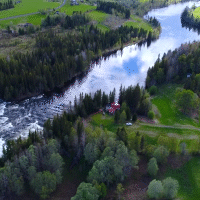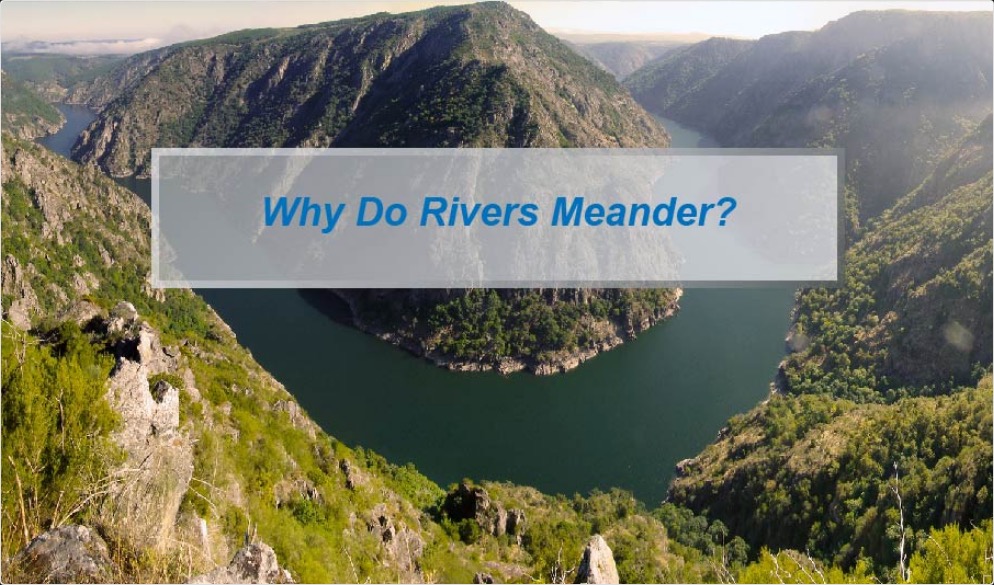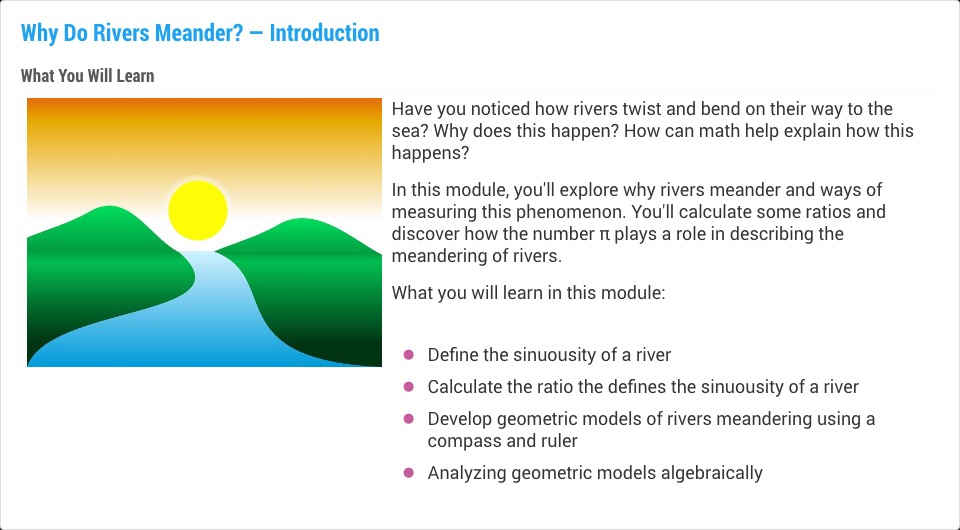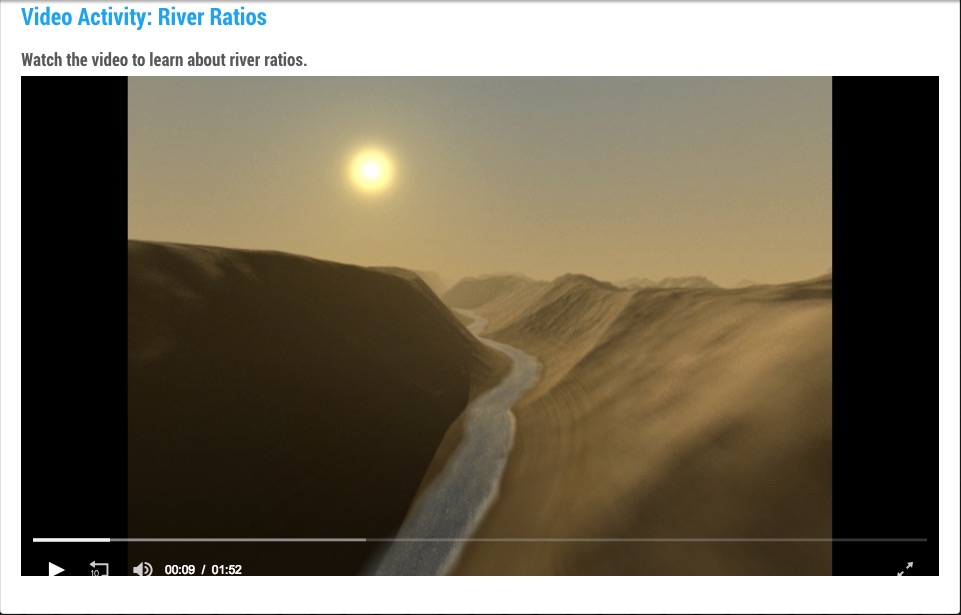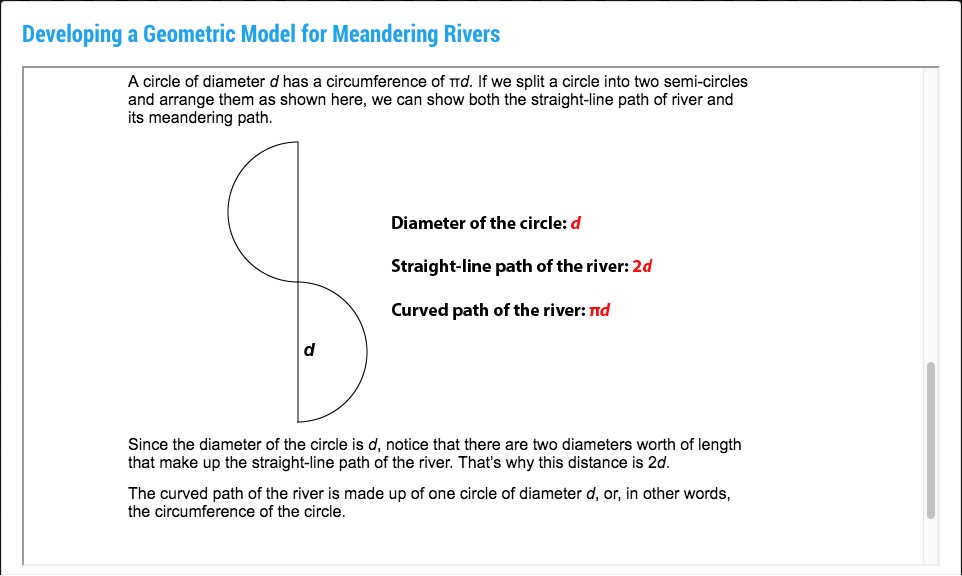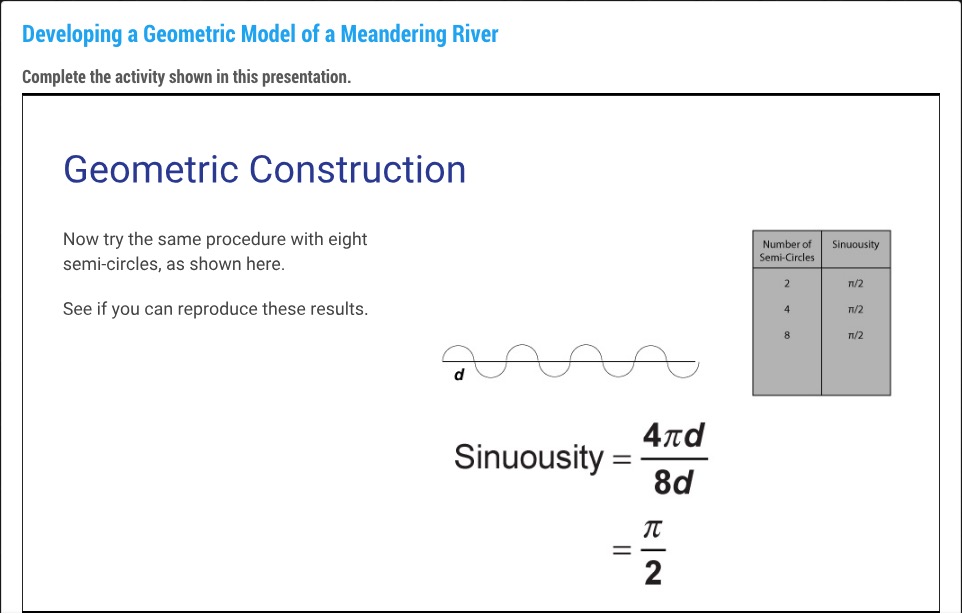Why Do Rivers Meander?
Description
Rivers twist and turn as they make their way to the sea. Why does this happen and how can this be explained mathematically? In this module we look at the geometry of meandering rivers. In the process we'll discover some fascinating numerical relationships.
Students will learn some basic concepts about the geophysics of how rivers form, but they will focus their analysis on what is called the sinuousity ratio. This is the ratio of the straight-line distance of the river and its meandering distance. This ratio reveals important characteristics of the river. Then, students will develop and examine geometric models involving circular arcs and segments to get a better understanding of the ratio. These models will first involve using a compass and straight edge to model a river. This is followed by an algebraic analysis.
This module is an excellent way of tying real world concepts to geometry and algebra. The real-world application is easy to understand and yet it reveals a wealth of math concepts to be explored.
Math Concepts
- Ratios and Rates
- Geometry
- Geometric Constructions
Learning Objectives
- Define the sinuousity of a river
- Calculate the ratio the defines the sinuousity of a river
- Develop geometric models of rivers meandering using a compass and ruler
- Analyzing geometric models algebraically
Prerequisite Skills
- Basic understanding of circles
- Basic understanding of ratios
- Some familiarity with the Pythagorean theorem
| Common Core Standards | CCSS.MATH.CONTENT.7.G.B.4, CCSS.MATH.CONTENT.7.RP.A.1 |
|---|---|
| Lesson Duration | 20 mins |
| Grade Range | 7th - 10th Grade |
